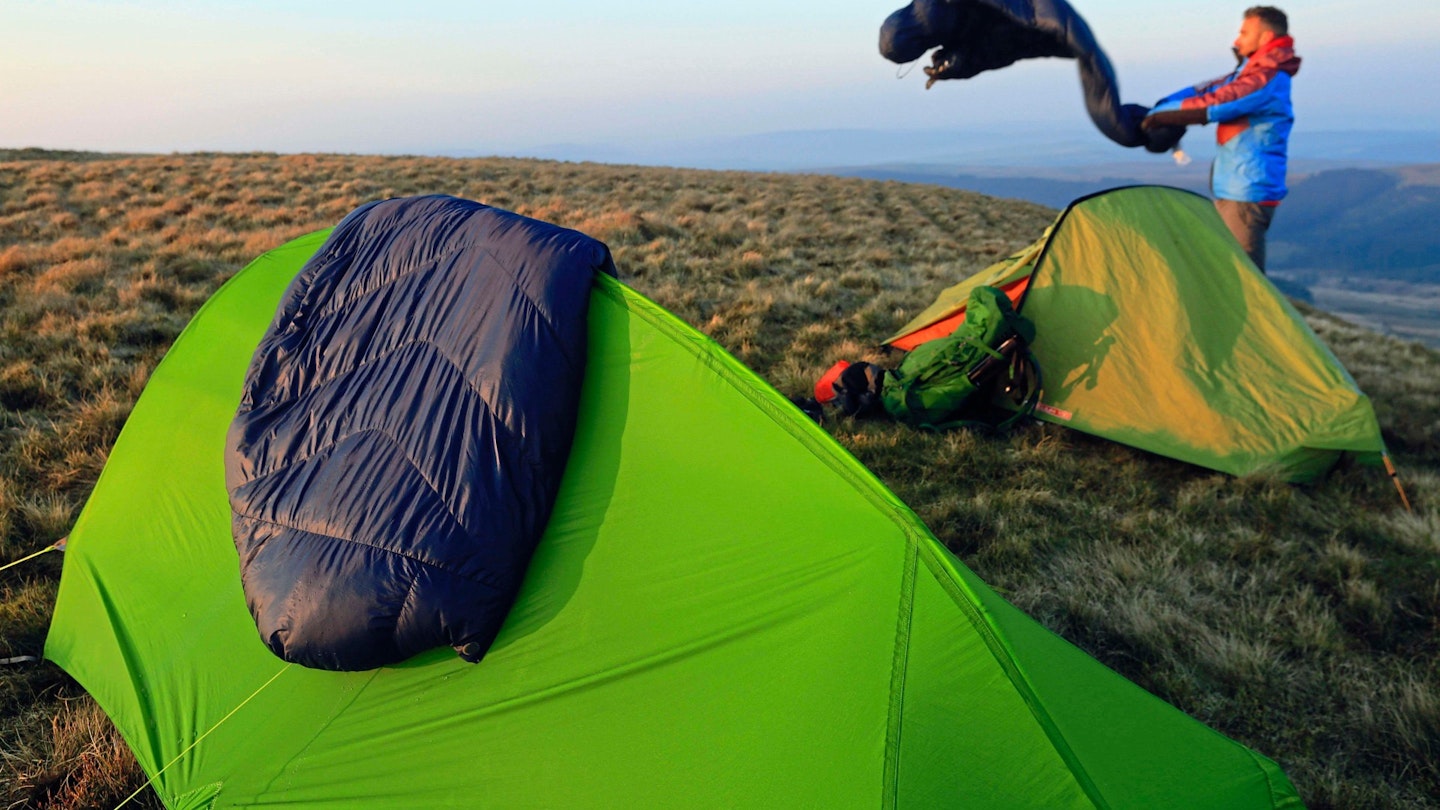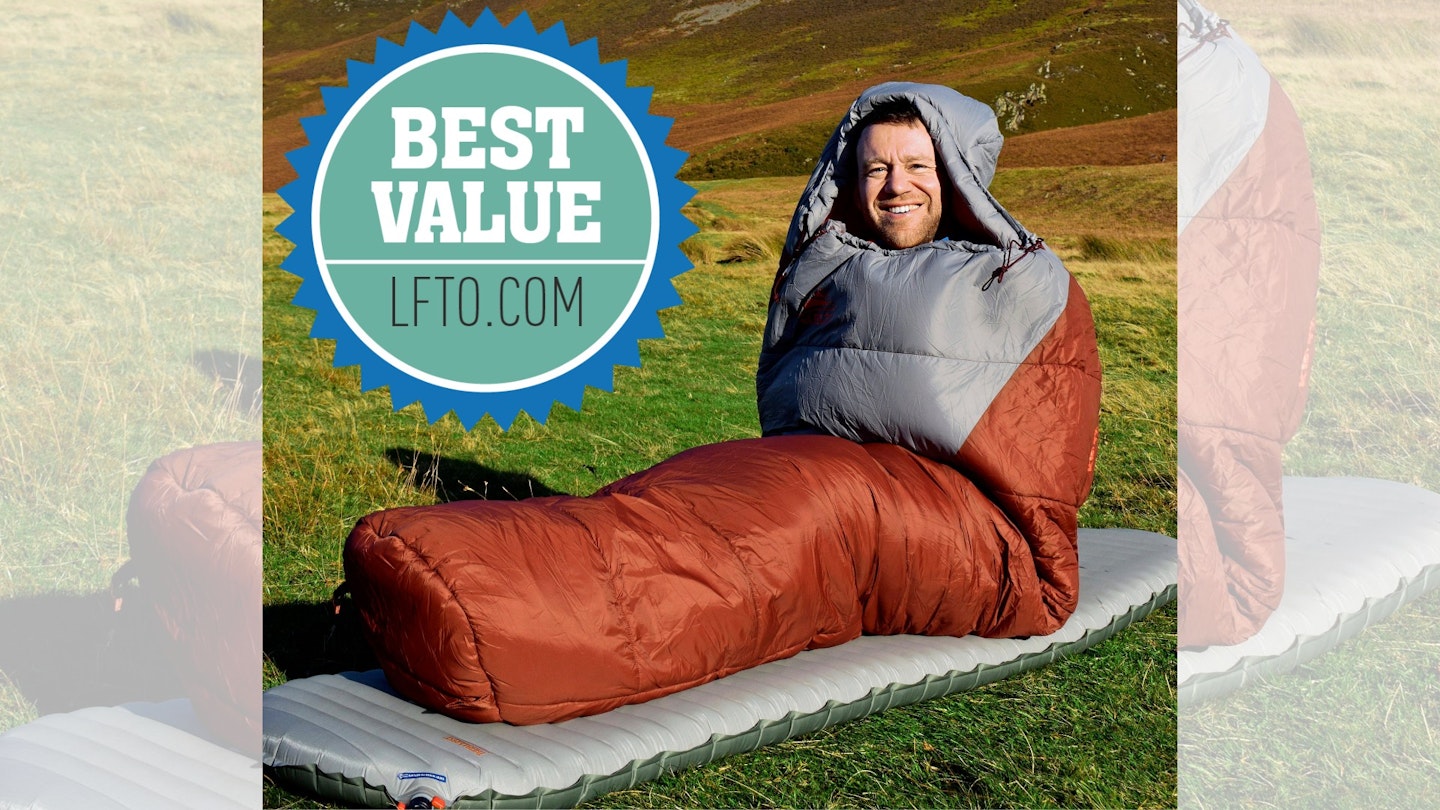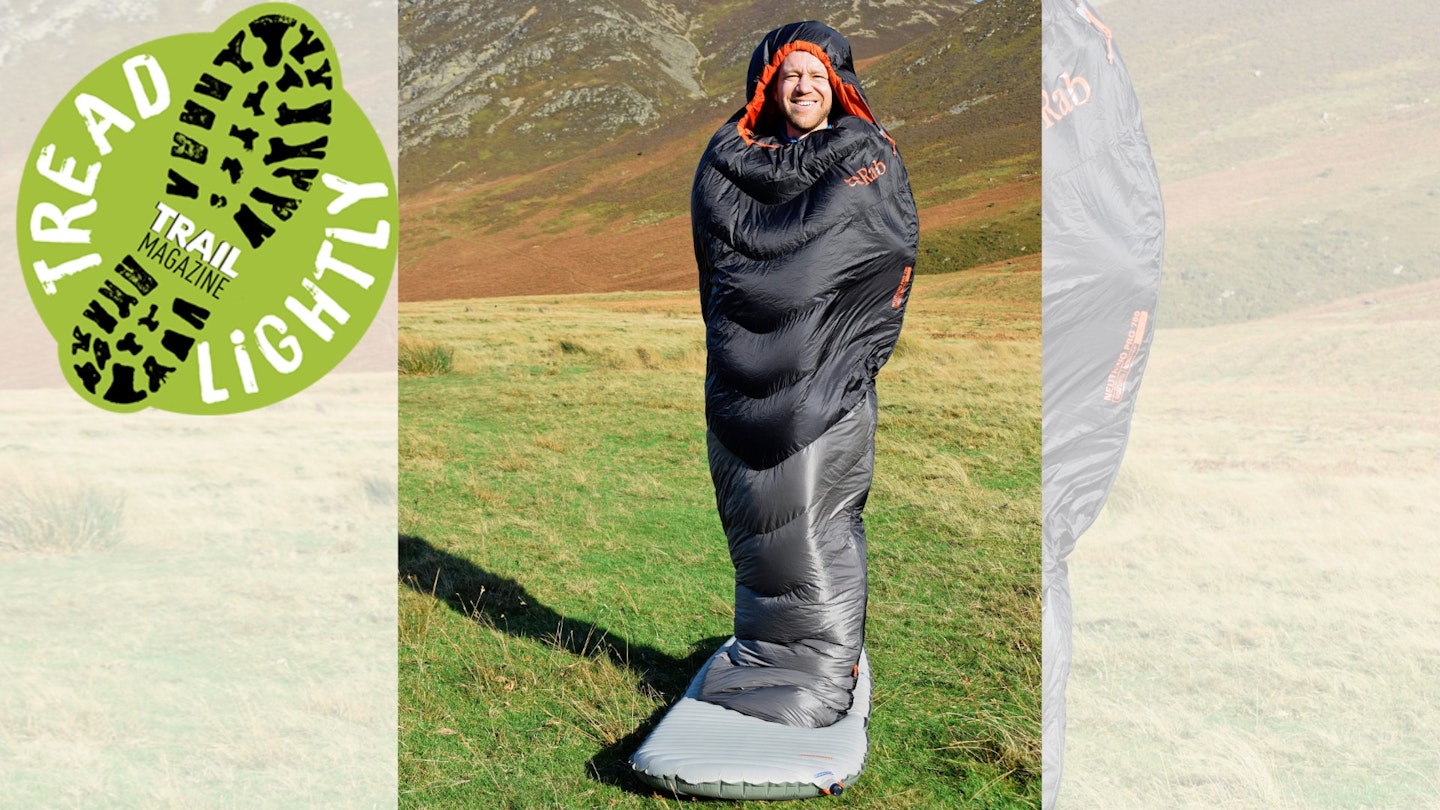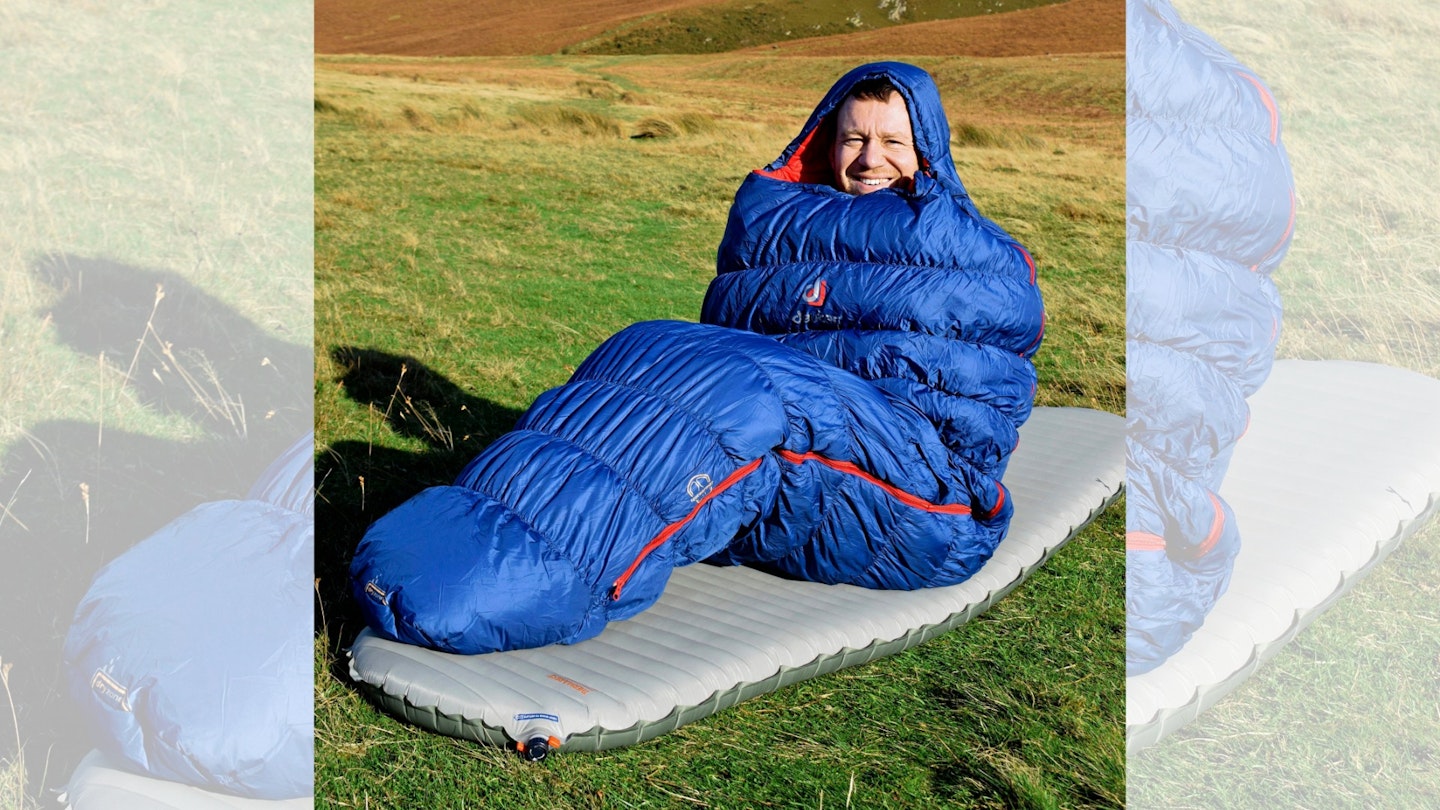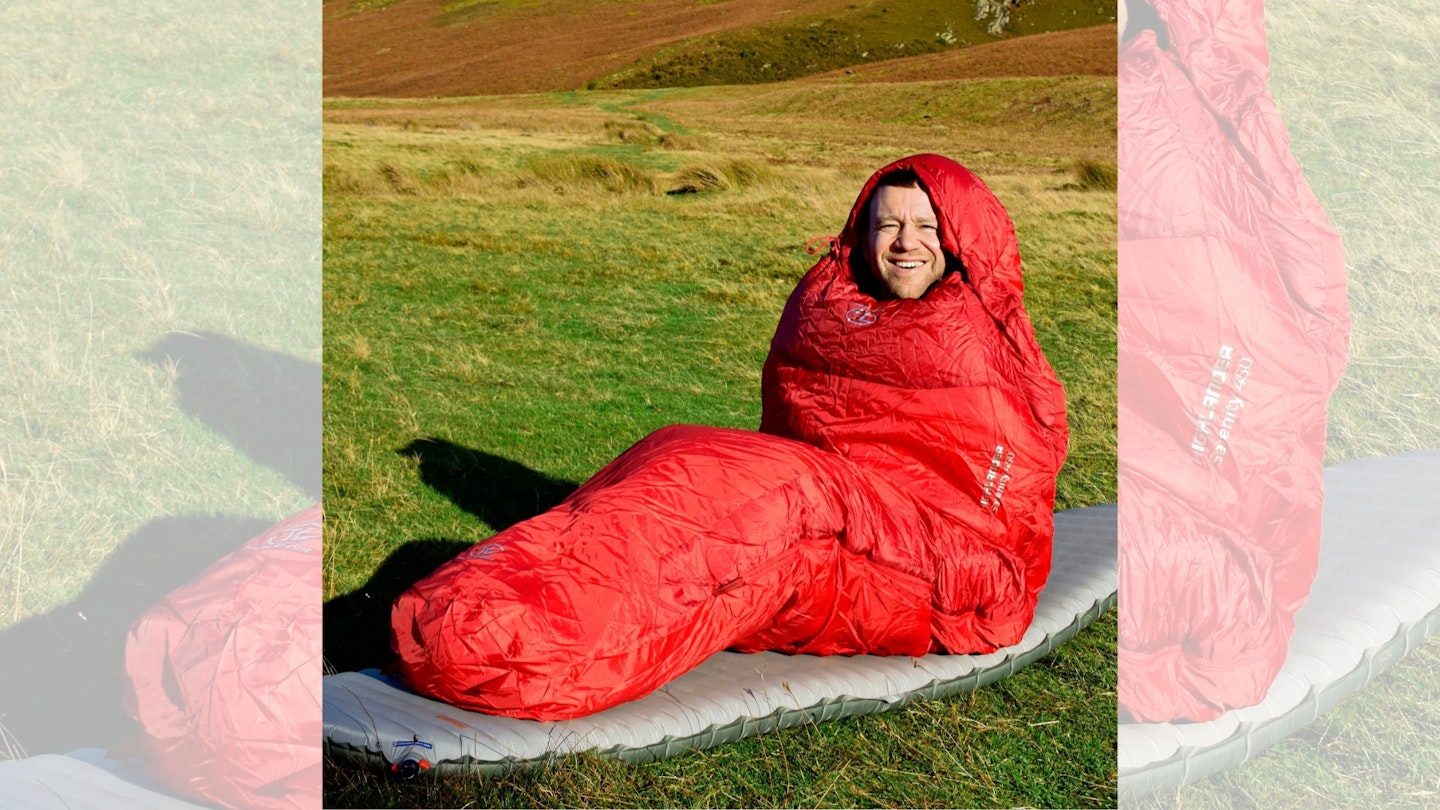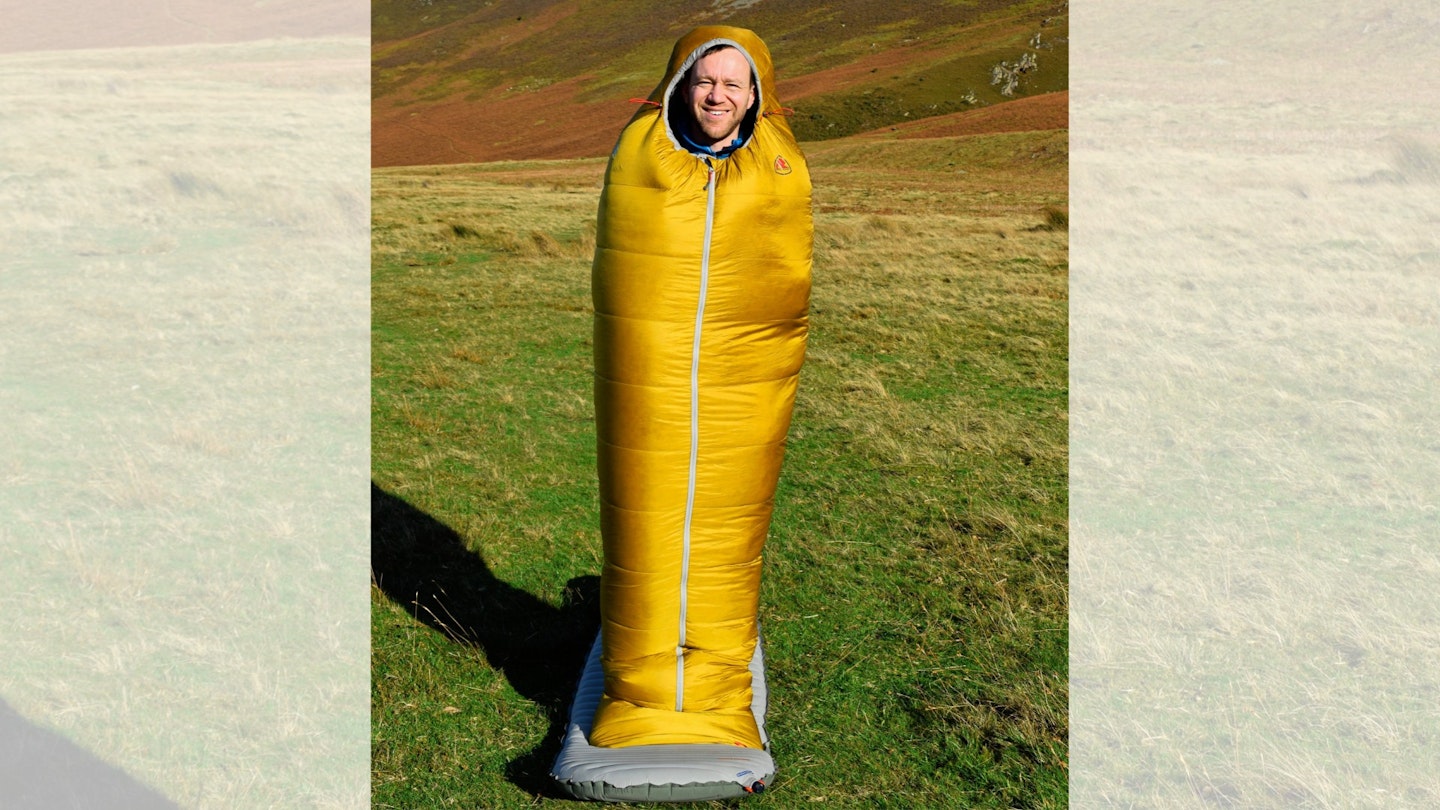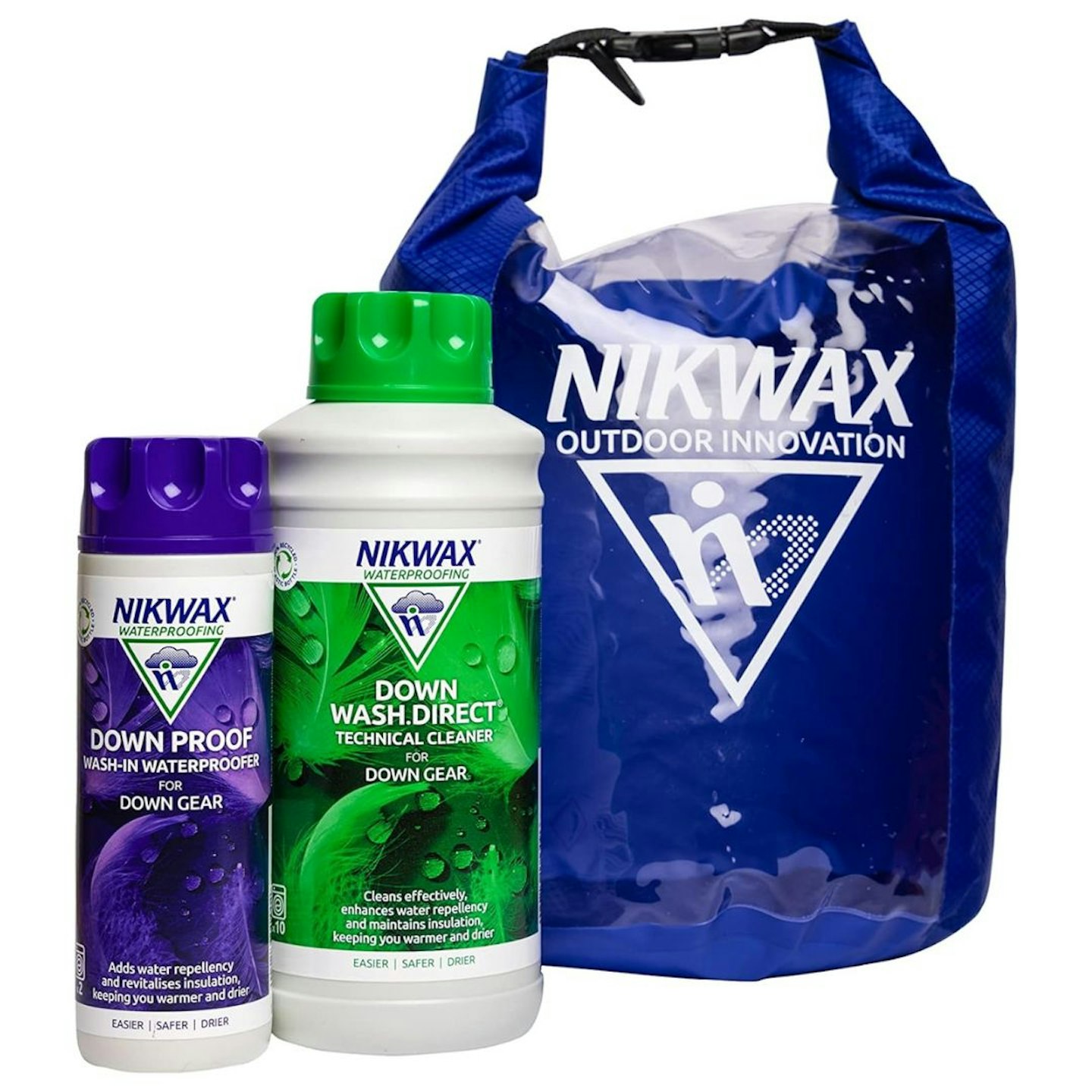Every good wild camp should end with a well-earned, restful sleep – not shivering until 3am in a woefully thin cocoon. That’s why finding the right sleeping bag is a must before you head off on any adventure, particularly in the deepest, darkest depths of winter.
But doing so can be a total minefield, with many variables at play. How cold will it actually be overnight? What’s the R-value of your sleeping mat? Do you feel the cold badly or do you tend to run warm at night? Are you a side sleeper or an on-your-back dozer? And what do you wear to bed – high-grade merino base layers or nothing but your birthday suit?
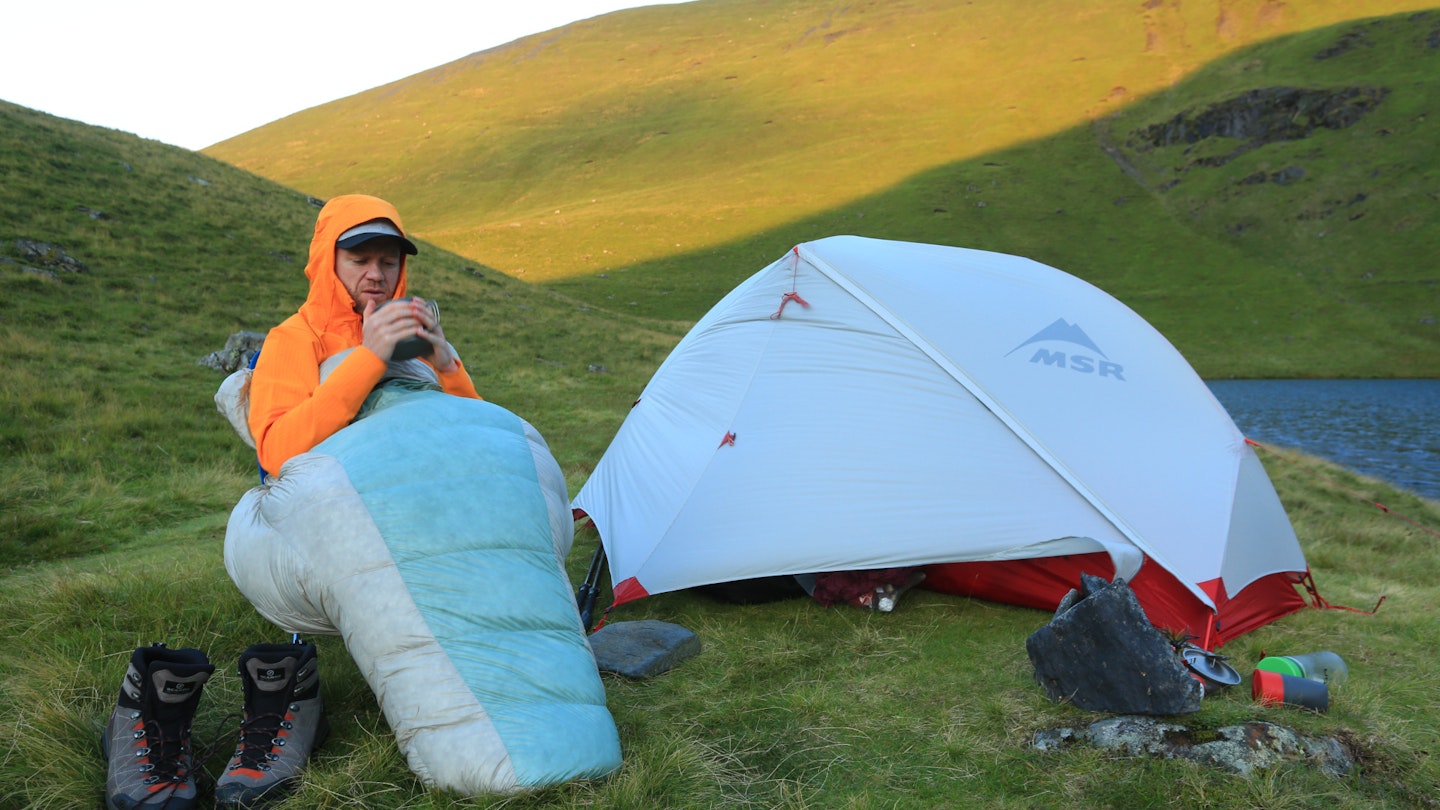
It’s all a very personal thing. Each different answer to these questions alters the criteria matrix for your perfect sleeping bag.
Our shortlist:
Best in Test: Therm-a-Rest Parsec 0F/-18C Sleeping Bag - view on outdoogear.co.uk
Best Value: Kelty Cosmic Synthetic 0 Sleeping Bag - view on wildbounds.com
Best for rugged winter hikes: Rab Neutrino Pro 700 - view on cotswoldoutdoor.com
In this guide we’ve focused on sleeping bags suitable for fully-fledged winter wild camps, with snowy ground and sub-zero temperatures. We have included products with comfort ratings ranging from -4°C to -10°C to enable a finetuned decision to your temperature needs. There’s a good range of prices and weights too.
Best winter sleeping bags in detail
Therm-a-Rest makes some of the best sleeping bags on the market and the superb Parsec -18°C is no exception. It is warm, cosy, light, very packable, fully featured and quite eco-conscious – it ticks all of the boxes.
With a -10°C comfort rating but clocking in at around 1kg (excluding compression bag), it offers a phenomenal warmth-to-weight balance. This is achieved through clever ‘heat-mapped zoned insulation’. Most (70%) of the down in the top of the bag where you need it most, and 30% below your body. Hence the Parsec is able to deliver better temperature ratings at a similar weight to competitor products – a massive win.
Other features include a 100% recycled ripstop nylon DWR shell and liner, and ‘synergy link’ connectors that strap your bag to your mat for an integrated sleeping system. The Parsec also has a super-cosy ‘toe-asis’ footbox, and heat-trapping draft collars and baffles. Compression and stuff sacks are provided too.
Regarding niggles, we wonder about the long-term durability of this bag’s lightweight construction – will it cope well with prolonged heavy use in the outdoors? Also, the premium price will be prohibitive for many, and the temperature ratings may be overkill for milder winter camps.
Pros
- Excellent warmth-to-weight ratio
- Sustainable
- Very cosy
Cons
- Expensive
- May be overkill for some
| Sizes | Small (168cm), Regular (183cm), Long (198cm) |
| Packed size | 23 x 20cm (all sizes) |
| Weight | 0.98kg (small), 1.09kg (regular), 1.16kg (long) |
| Insulation | PFC-free RDS certified 800-fill Nikwax Hydrophobic Down |
| Materials | Recycled 20D nylon shell and lining w/ DWR |
| Temperature rating | Comfort -10°C, Limit -18°C |
The Kelty Cosmic Synthetic 0 offers a -8°C comfort rating for a very reasonable sum, although we found its -8°C comfort limit seems overly optimistic. But weighing in at 2064g, it's a nice balance for campers more concerned with price than the weight of their backpacks.
The mummy-style bag is filled with Kelty’s CirroLoft synthetic insulation, which feels thick and warm (there’s a whopping 1560g of it). It fluffs up pretty impressively despite being synthetic. The polyester and nylon taffeta liner and shell, which Kelty describes as “soft as silk”, provide a cosy sleeping environment, and warmth is further locked in by a large neck baffle and insulated hood with drawcord adjustment.
You also get a spacious footbox, internal zippered pocket, PFC-free DWR treatment on the shell, compression stuff sack, and a ¾-length, two-way zipper with integrated baffle. In other words, you get a lot of bang for your buck with this bag. But is it too heavy and chunky for your mountain exploits?
As expected with cheap but very warm synthetic bags, the Cosmic is heavy and bulky, and therefore far from ideal for lightweight wild camping. The hood has a slightly odd shape too, and build quality and features are relatively basic.
Pros
- Affordable
- Very warm
- PFC-free DWR
- Comfy
Cons
- Big
- Heavy
- Basic
| Sizes | Regular (183cm), Long (198cm) |
| Packed size | 43 x 28cm (both sizes) |
| Weight | 2.12kg (regular), 2.23kg (long) |
| Insulation | Synthetic CirroLoft |
| Materials | 50D 300T polyester lining, 380T nylon shell w/ PFC-free DWR |
| Temperature rating | Comfort -8°C, Limit -15°C |
Rab’s Neutrino hand-filled sleeping bags are always a safe bet for quality and performance. There are 10 products, each filled with 800 fill power goose down. The fill weight, however, increases in 100g increments from 200g to 900g. Eight bags are unisex, the 400 and 600 are available in women-specific versions too, and the 300, 500, 700 and 900 are ‘pro’ versions with a more weather-resistant Pertex Quantum Pro shell.
We’ve tested the third warmest option – the Pro 700, which features a highly-tapered mummy design, good warmth-to-weight ratio, and strong weather protection. With a 700g fill weight, the bag is toasty (-4°C comfort rating), and the shell feels reassuringly rugged too.
Weight-saving, chevron-shaped baffles allow the down to fully loft, eliminating cold spots and maximising warmth. Additional zipper and neck baffles further lock in warmth. You also get an adjustable hood, ¾-length YKK zipper, angled footbox, cotton storage sack and waterproof compression sack. The shell and liner are 100% recycled.
The tapered cut might not suit all body shapes, so try before you buy. The price tag is sky-high and only justifiable for serious winter campers, and the -4°C comfort limit is disappointing considering the cost. If the insulation was zoned better, the temperature ratings might improve.
Pros
- Rugged
- Effective baffles
- Waterproof stuff sack included
- Rab a Fair Wear Foundation 'leader'
- Rab offers good repair and rental services
Cons
- Expensive
- Shape may not suit all
| Sizes | Regular (185cm), Long (200cm) |
| Packed size | 40cm x 26cm (both sizes) |
| Weight | 1.14kg (regular), 1.22kg (long) |
| Insulation | PFC-free RDS certified 800-fil Nikwax Hydrophobic Down |
| Materials | Recycled 20D Pertex Quantum Pro nylon shell, recycled 20D nylon lining |
| Temperature rating | Comfort -4°C, Limit -10°C |
Although the Exosphere –10 has been replaced by the Exosphere –11 for 2024, we still recommend the Exosphere –10 if you can get your hands on one, purely because of the 'last season' value it offers.
This bag gives you a -4°C comfort rating, lots of features and a good all-round design for an agreeable price.
The fill is deuter’s Thermo ProLoft synthetic insulation, which feels warm and cosy, while the overall design is best described as super-stretchy. It features internal and external elastic chamber seams, which provide 25% expansion and contraction in the bag’s width. This means the bag stretches with you as you move at night, but when you’re still the insulation is close to the body, eliminating cold spots and making it super-snug.
Other nifty features include the use of brushed fleece inserts inside the bag for a lovely soft feel, extra water repellency at the head and feet via a sturdier Dryzone shell, and Velcro closure to the adjustable neck baffle for a sealed-in feeling around the head.
You also get an adjustable hood, full-length two-way zipper, added insulation in the cosy footbox and a compression sack.
If you’re going for a budget synthetic bag, there are far cheaper options out there. It’s pretty heavy and big, even when compressed down, and some will find the body-hugging sensation far too tight, narrow and constricting.
Pros
- Good value
- Clever stretchy design
- deuter a Fair Wear Foundation 'leader'
- PFC-free
Cons
- Quite heavy and bulky
- Some may feel claustrophobic
| Sizes | Regular (185cm), Long (200cm) |
| Packed size | 35 x 22cm (regular), 36 x 23cm (long) |
| Weight | 1.28kg (regular), 1.39kg (long) |
| Insulation | deuter Thermo Proloft |
| Materials | 30D nylon lining and shell w/ PFC-free DWR |
| Temperature rating | Comfort -4°C, Limit -10°C |
You can easily spend an absolute fortune on a down winter sleeping bag. But to save hundreds of pounds, instead opt for a synthetic sleeping bag from a price-conscious brand like Scottish firm Highlander.
The mummy-shaped Serenity 450 offers superb -4°C comfort and -10°C comfort limit ratings, courtesy of two 225gsm sheets of flat, wadded synthetic insulation. The shell is a 210T ripstop polyester and the lining is a 210T polyester pongee. Features include an adjustable thermal hood, cinchable shoulder baffle, Velcro storage pocket for a phone or headtorch, and a two-way, ¾-length zipper with an integrated baffle.
All-round comfort is more than adequate considering the price. But ultimately, this is not a premium offering for winter camping connoisseurs. Instead, it’s squarely targeted at occasional winter campers and bargain hunters, who don’t mind the extra weight and bulk.
Weighing in at 2065g, it’s very heavy, as well as bulky and chunky, so it takes up lots of space in your backpack. The overall build quality is relatively basic and cheap (as expected at this price). The polyester lining isn’t the comfiest, and the shell feels too loose and detached from the insulation.
Pros
- Very affordable
- Very warm
- Excellent comfort
Cons
- Heavy and bulky
- So-so build quality
| Sizes | One size |
| Packed size | 41cm x 26cm |
| Weight | 2kg |
| Insulation | SFX Spiral Hollowfibre polyester |
| Materials | 210T polyester lining and shell |
| Temperature rating | Comfort -4°C, Limit -10°C |
Sitting firmly in the mid-range of the market, the mummy-style Robens Couloir 750 is a great all-round package. It's warm, well-designed and fully featured. The insulation is 750g of 700 fill power responsibly sourced duck down, providing an accurate and impressive -8°C comfort rating. That said, lighter bags are available with similar temperature ratings.
The standout feature of this bag is its central zip. It may polarise opinion, with some potentially finding it awkward for comfort and venting. But we found it makes getting in and out easy in a cramped tent. It also lets you finely control ventilation and adds versatility (completely unzip to use the bag like a quilt). The central zip also enables you to sit up in the bag and use your arms for chores like cooking or gear organisation.
A humongous double baffle underneath the central zipper eliminates heat loss. Warmth is sealed in further by the adjustable 3D hood and super-cosy ‘thermocollar’. This is a plush baffle of down providing a snug fit around the neck and shoulders. You also get a ‘shark fin’ footbox, body contour profiling, hanging loops, mesh storage sack and compression bag.
Pros
- Handy central zip
- Impressive comfort rating
- Cosy
- PFC-free
Cons
- Tad overpriced
- Lighter options with same warmth available
| Sizes | One size (195cm) |
| Packed size | 30 x 22cm |
| Weight | 1.24kg |
| Insulation | RDS certified 700-fill down |
| Materials | PFC-free 20D 380T nylon shell and lining |
| Temperature rating | Comfort -8°C, Limit -15°C |
Don't forget about sleeping bag liners
A sleeping bag liner is a cost-effective means of boosting the warmth of your existing sleeping bag, rather than shelling out for an expensive winter sleeping bag.
Sleeping bag liners also help keep your sleeping bag clean and protect the insulation from sweat, oils, and dirt – substances that inhibit the performance of insulation.
There are a range of sleeping bag liners around, usually being made from silk, cotton (or polyester/cotton blend), or a thermal material such as fleece. For winter conditions, the latter is your best bet. Below are two of our favourites:
Best thermal sleeping bag liner
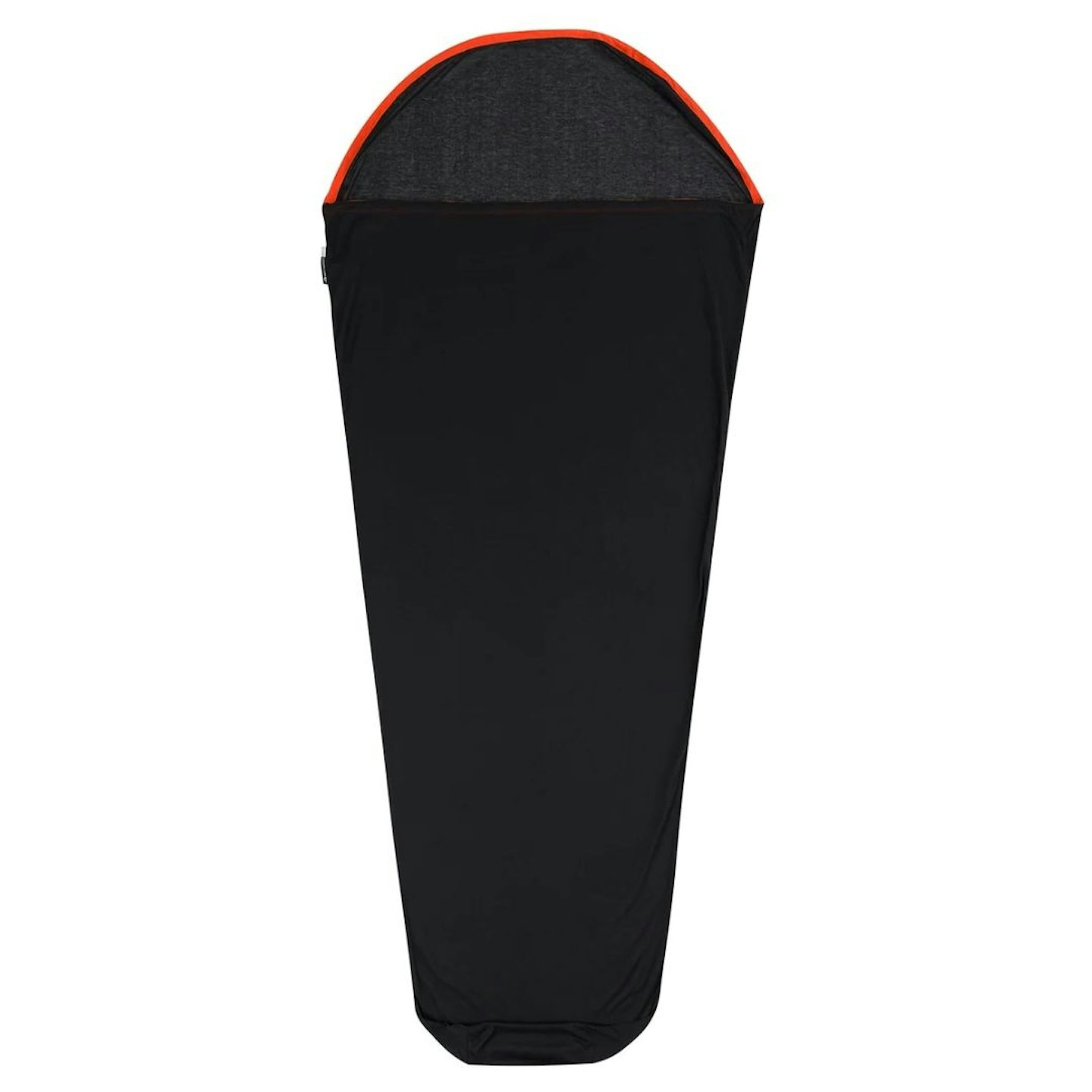
Newegg
This nifty sleeping bag liner is soft, stretchy, and super comfortable. Yet, it adds considerable warmth to your sleeping system (up to 8°C) while being much lighter and compact than most thermal sleeping bag liners.
Pros
- Comfortable and soft
- Stretchy
- Lightweight for a thermal sleeping bag liner
Cons
- There are cheaper thermal sleeping bag liners out there
| Packed size | 15 x 11cm |
| Weight | 248g |
| Materials | Thermolite polyester |
Best budget thermal sleeping bag liner
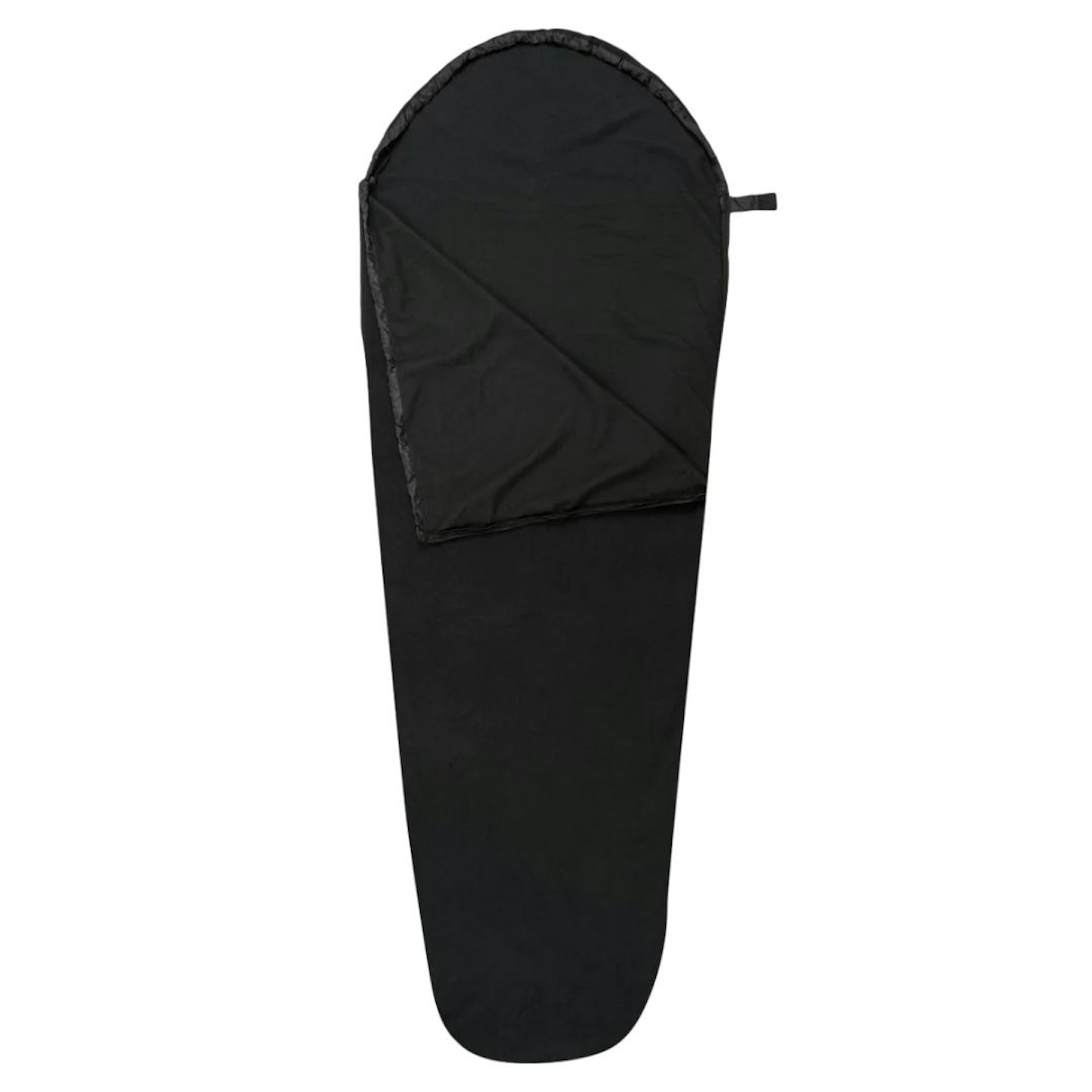
highlander-outdoor.com
Highlander is popular among hikers for the value it brings to the outdoor gear market. While the Sea to Summit liner is the better performer, this snug fleece liner is a great alternative if you're on a budget.
Pros
- Zips for easy access and ventilation
- Quick drying
- Snug fleece fabric
Cons
- Bulkier and heavier than the Sea to Summit liner
| Packed size | 35 x 14cm |
| Weight | 665g |
| Materials | 200gsm polyester fleece |
What to look for in a winter sleeping bag

What temperature rating should a winter sleeping bag have?
As a general rule of thumb, use a sleeping bag’s EN/ISO standard temperature ratings to direct your decision making. Ignore the ‘extreme’ rating and focus on the ‘comfort’ and ‘comfort limit’ grades. The former is defined as warm enough for the ‘average female’, the latter for the ‘average male’.
The best approach is to build a buffer of up to 5°C into your buying decision. If you’ll be sleeping at -2°C, choose a bag with a rating of between -4°C and -7°C, for example. You can always unzip a sleeping bag to dump heat if you’re getting too toasty. But there’s no way to make it warmer if you’re shivering at night.
Is down or synthetic insulation best for winter sleeping bags?
Choose down for a superior warmth-to-weight ratio. That is, the lightest, most compact winter sleeping bags are so because of down insulation. Avid winter hikers venturing into the mountains will, if their budget allows, get the best performance from a down sleeping bag.
Synthetic insulation is getting ever better, but still not quite as light or compact as down. But what it does have on its side is value. Synthetic insulation brings the price of a winter sleeping bag down considerably. And if you're prepared to make the weight and bulk trade-off, it's a good way to go.

What makes a sleeping bag more sustainable?
In terms of materials used, down insulation must be ethically sourced. The easiest way to tell it has been is by Responsible Down Standard (RDS) certification. Because the rest of a sleeping bag uses synthetic material (mainly nylon and polyester), the use of recycled fabrics is important as is independent certification such as bluesign.
Many sleeping bags have treatments to repel moisture, whether that's in the down insulation or the outer fabric. Look for PFC-free water repellent treatments, as an important sustainability step.
Also consider a brand's wider sustainability efforts. Third party certification such as B Corp certification, Fair Wear Foundation membership, and bluesign partnership show that the brand is operating more transparently and responsibly than the industry standard.
Longevity is a key part of sustainability too. A brand should offer a repair service for its gear, or partner with a repair specialist. In the UK, there are plenty of specialists, retailers, and brands that have good repair services, such as Lancashire Sports Repairs, Cotswold Outdoor, Alpkit, and Rab.
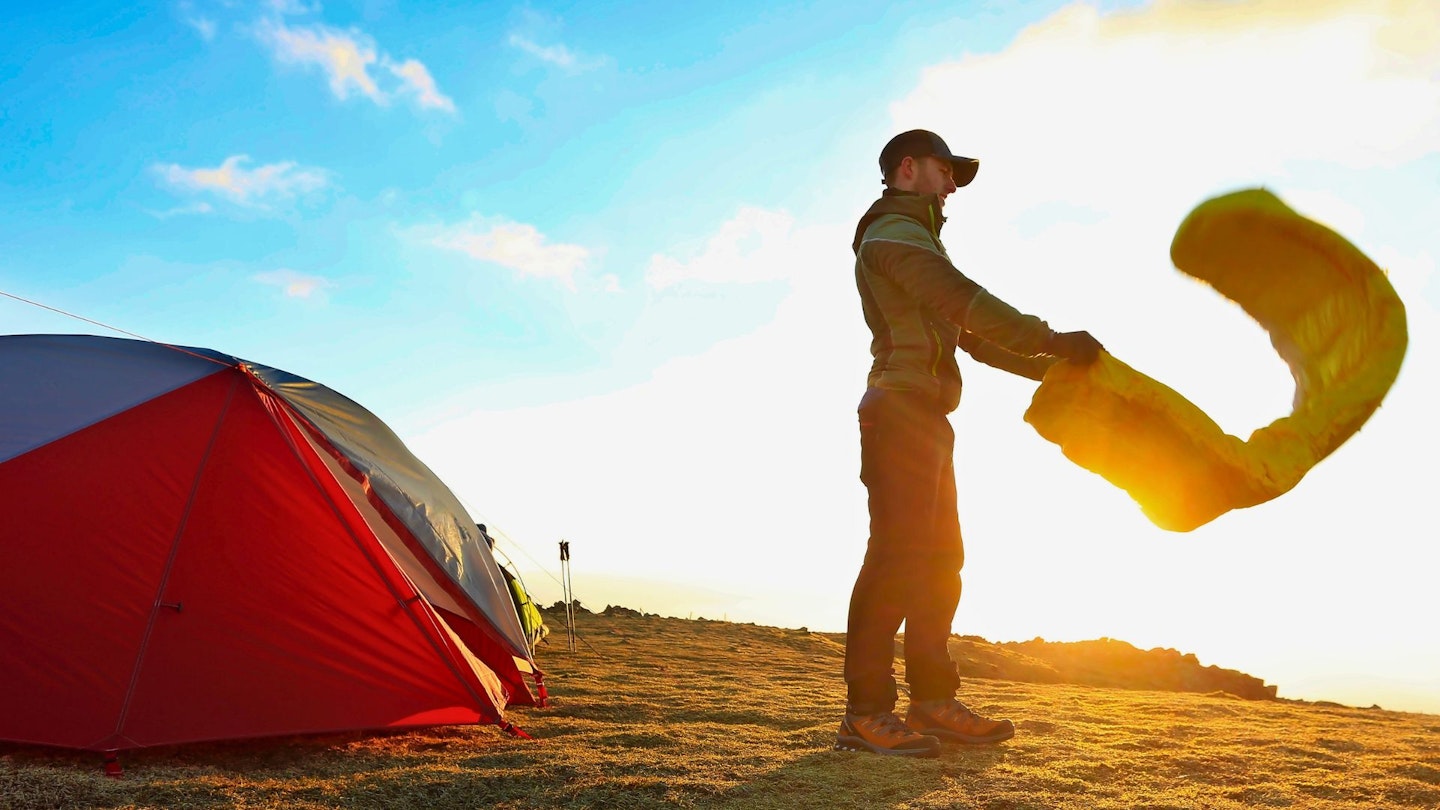
What length of zip is best?
A full-length zip makes it easier to get in and out of the bag and permits venting overnight if you’re feeling hot. But a 3/4-length zip helps keep the weight down and improves overall warmth.
Warmth-adding features
An insulated, adjustable hood can make a big difference in cold conditions, as will a cinched-in shoulder baffle (draught collar) to lock in heat. Extra baffles in a shaped footbed and a baffle over the main zip add warmth too.
Sleeping bag care and cleaning
Sleeping bags, like other down and synthetic insulated kit, need cleaning periodically to keep the insulation and materials in tip top condition and performing as well as they can, which is something standard laundry detergents can't help with.
This means using special gear cleaning products. Recommended below, they are easy to use and formulated for use with technical fabrics and insulation.
Best sleeping bag wash
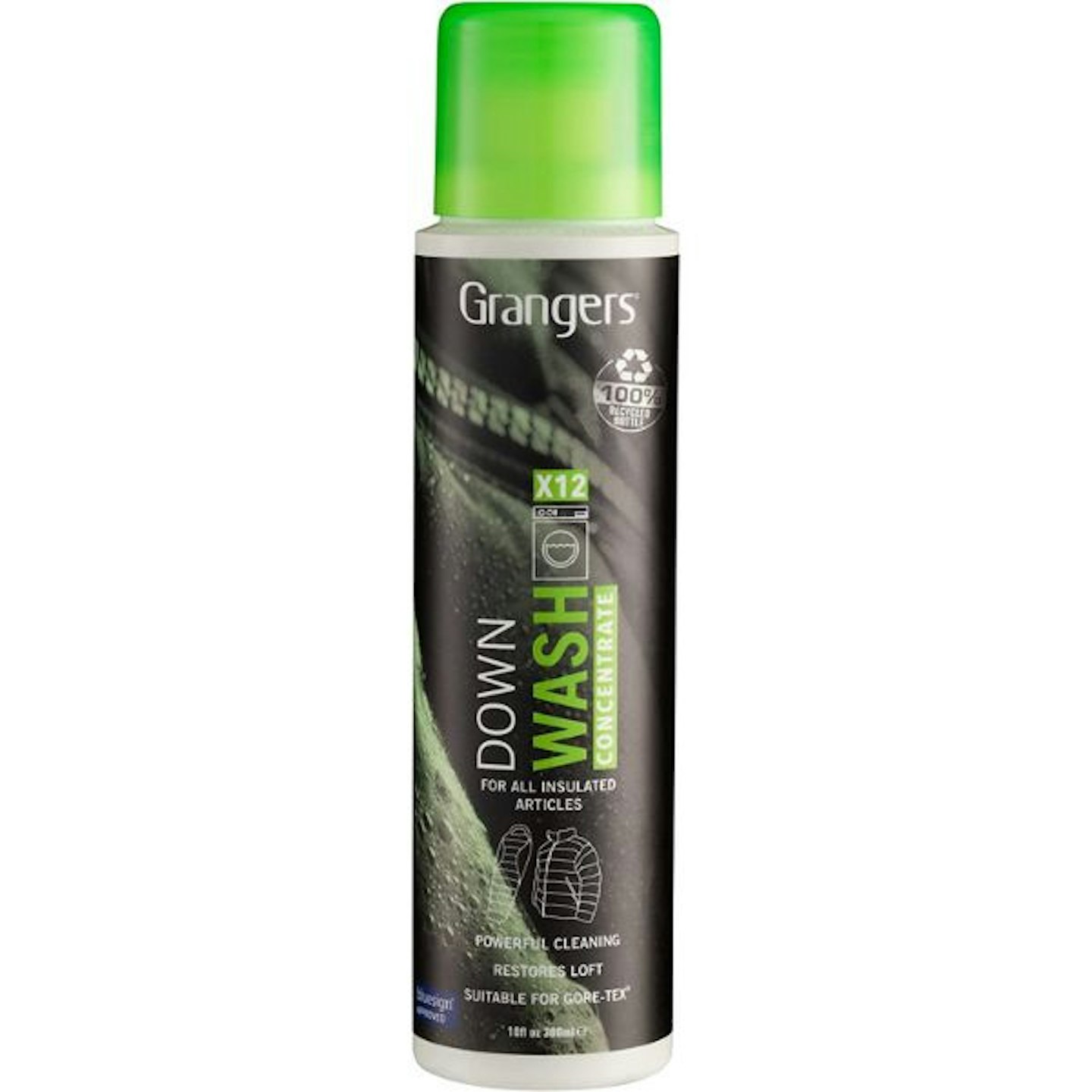
Bluesign-approved, PFC-free, and water-based, this is a sustainable and effective wash for down and synthetic-insulated sleeping bags, gear, and clothing. It's a concentrated formula too, so a little goes a long way.
Pros
- Sustainable
- Effective
- Concentrated formula
Cons
- None
Best sleeping bag wash kit
Like Grangers, Nikwax Down Wash Direct is an eco-friendly and effective cleaner for all insulated gear. This kit also contains Nikwax Down Proof, which revitalises water repellency.
Pros
- Sustainable
- Wash and reproof kit
Cons
- Grangers is more concentrated
How we test winter sleeping bags
The winter sleeping bags recommended here were tested by James Forrest. James is one of our freelance gear testers and is a prolific peak bagger and long-distance walker who’s one of the most high-profile outdoor writers in the UK.
Winter sleeping bags are one of the biggest single investments in outdoor gear hikers make. As such, we heavily scrutinise each one we test to see if it lives up to the promises made by the manufacturer.
This involves testing them in the coldest weeks of the year, in some of the UK's most remote and challenging locations. On test, we evaluate how well each winter sleeping bag insulates in dry and damp conditions; how well its features function in the real world; how durable it is; and how it compares to rivals.
Sustainability is another very important aspect for us. We look into how each sleeping bag is made, and what the brand is doing more generally in pursuit of sustainability.
Read more on how we test here.
